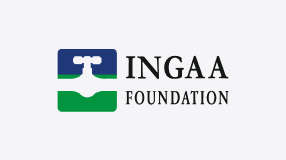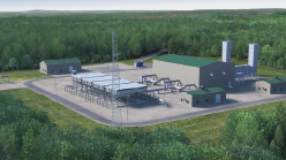The Interstate Natural Gas Association of America (INGAA) Foundation commissioned ENSR International (ENSR), an environmental consulting firm, to undertake a study to solicit, assimilate, and present the natural gas transmission Industry reactions to the proposed revisions of the Federal Energy Regulatory Commission’s (FERC’s) Upland Erosion Control, Revegetation, and Maintenance Plan (Plan, FERC 1994) and Wetland and Waterbody Construction and Mitigation Procedures (Procedures, FERC 1994). The stakeholders welcomed this opportunity and initiated a broad- based effort to respond to FERC’s call for comments.
The FERC Plan and Procedures documents comprise construction best management practice standards that the FERC first introduced in 1994. The FERC has encouraged natural gas pipeline companies to adopt these documents into their applications to the FERC and commit to these standards in construction for new pipelines and maintenance on existing pipelines. In December 2001, the FERC proposed changes to these documents and requested comment from stakeholders in order to update and revise these documents, as needed. The FERC recognized a need to revise these documents in order to increase technical flexibility and introduce more performance-based standard language, where possible.
The INGAA Foundation commissioned this study because its mission statement, objectives, and membership are uniquely positioned to provide the most comprehensive natural gas transmission company and their service providers (Industry) reaction to the FERC’s proposed revisions to the Plan and Procedures documents. The INGAA Foundation, established in 1990, mission is to advance the use of natural gas for the benefit of the environment and the consuming public, primarily by facilitating the efficient construction and safe, reliable operation of the North American natural gas pipeline system.
The INGAA Foundation has more than 100 members representing natural gas pipeline companies, construction companies, engineering firms, pipe and compressor manufacturers, accounting firms, companies providing information technology services, and other suppliers of goods and services to the pipeline industry. Over the last decade the Foundation has produced numerous research reports addressing the environmental impacts of energy use, improved pipeline construction practices, and pipeline safety procedures.
The INGAA Foundation organized a Focus Group to develop this study. Focus Group members included a broad based representation of INGAA Foundation members with extensive experience in preparing new construction FERC applications and/ or extensive experience in environmental compliance for new construction projects and existing pipeline maintenance projects. The Focus Group reviewed the entire contents of both documents and made recommendations on specific proposed revisions, the need for additional stakeholder input, the need for clarification from the FERC regarding specific proposed revisions, and final review of the study conclusions. The Focus Group agreed with the FERC that the documents should move away from controlling language, where possible, in order to allow for more flexibility in the field in making decisions regarding the use of the most appropriate tools to protect resources during construction, yet also provide an adequate level of specificity so as to avoid inconsistencies in interpretation.
The results of this study are presented in tabular format in order to compare the documents’ original language, FERC’s proposed revision, and Industry recommendations. The results of this study will be presented to FERC for their consideration.
Two topics demanded considerable attention from the Focus Group and stakeholders throughout the study: FERC Plan, Section V.B.2, Topsoil Segregation and FERC Procedures, Section V.B, Equipment Bridges. It is the understanding of the Focus Group that FERC staff proposed changes to these sections in order to further improve restoration success (Plan, Section V.B.2) and to decrease sedimentation impacts in waterbodies as a result of clearing efforts (Procedures, Section V.B). In considering these comments from the FERC staff the Focus Group was still unable to see a technical justification for the proposed revisions. This study recommends that further dialogue is needed between the FERC staff and Industry until clarity is reached on these two issues.
It is anticipated that the FERC will review comments and notice a revised draft of the FERC Plan and Procedures for public comment in November 2002. The Industry is looking forward to reviewing the exact draft wording of the proposed revisions. We encourage the FERC, INGAA, and the Industry to continue to keep an open dialogue regarding the further development of these best management practice documents.





